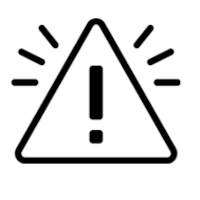Risk Management

Exceptional risk management safeguards project success by anticipating uncertainty, assessing probability and impact, and embedding proactive mitigation into decision-making. It transforms threats into opportunities for innovation while building organisational resilience. Through transparent communication, clear ownership, and adaptive planning, risk managers ensure alignment with strategic goals and deliver confidence in complex, evolving environments.
Experience
Greencross Vets – Structured Risk Identification & Ownership
Led a time-boxed risk identification workshop at project kick-off. Focused solely on articulating the event and impact to objectives (time, scope/quality, cost) — 2 minutes per risk. Facilitated inclusive participation, then assigned risk ownership distinct from mitigation actions: “Who is taking the risk?” Post-session: consolidated the register, removed duplicates, and socialised the baseline with stakeholders.
Calibrated Risk Analysis & Prioritisation
Established a probability-impact-proximity matrix tailored to project context. Conducted one-to-one sessions with risk owners to confirm impact, estimate probability, and set mitigation priority. Scheduled follow-ups to track execution — embedding risk review into regular cadence.
AI-Enhanced Risk Intelligence
Maintain a comprehensive risk log to capture rich, granular data. Use AI to cluster related risks, identify patterns, and generate audience-specific summaries — executive overviews, technical deep dives, or mitigation playbooks — ensuring the right message reaches the right stakeholder at the right time.
Continuous Risk Governance
Integrated risk identification into sprint reviews and steering updates. Periodically refreshed the register via dedicated sessions to surface emerging risks. Used retrospectives to improve the process — feedback at Greencross confirmed engagement and accuracy, with adjustments to include risk raisers in analysis.
PRINCE2 & MBA Foundations
Applied structured risk frameworks from PRINCE2 Practitioner and MBA studies, but refined through experience to focus on value over procedure — ownership, proximity, and actionable mitigation over bureaucracy.
Credentials
- Master of Business Administration (MBA)
- PRINCE2 Practitioner
- MSP Practitioner
- Certified SAFe™ 6.0 Agilist
Related Skills
Contact
Connect on LinkedIn to discuss risk leadership.